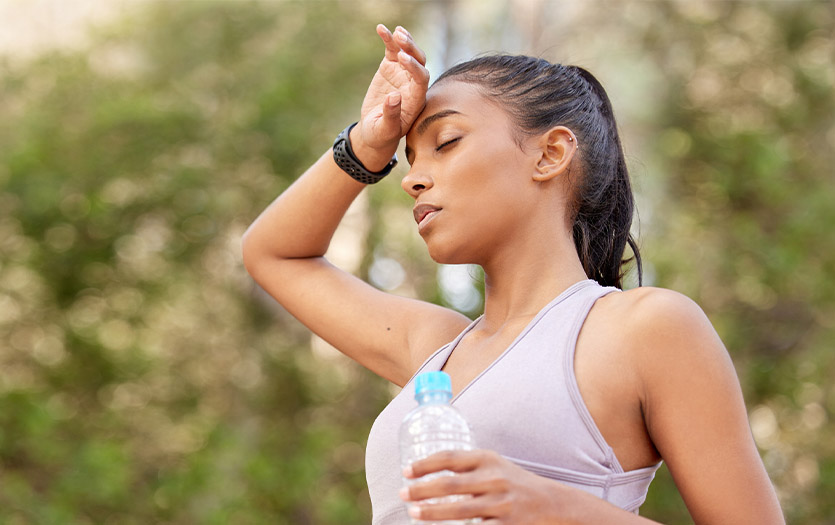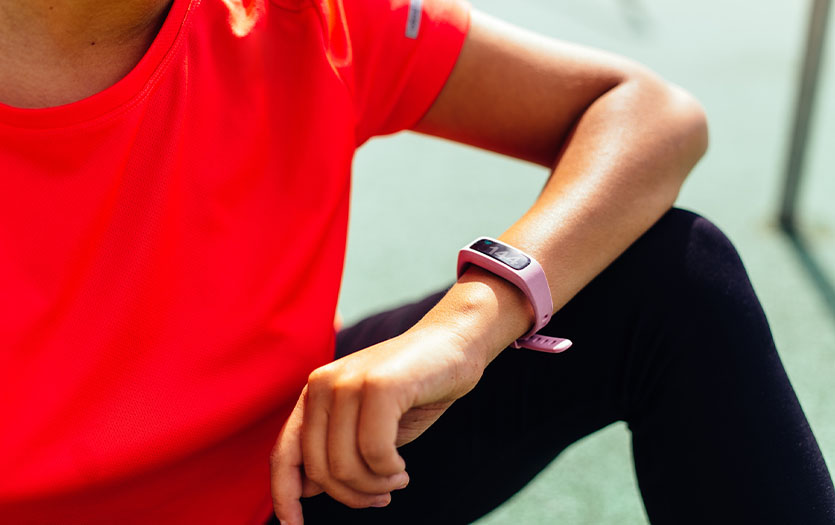
This post was written by Linying Xiao, ATC, certified athletic trainer, Parkview Sports Medicine.
Whether you’re running, cycling, hiking or playing your favorite group sport outside, it’s critical that you consider the weather conditions before you leave the house. As we see our region’s temperatures increasing, we also see a rise in heat-related illness, particularly when individuals are being physically active.
What to watch for
The heat index is a measure indicating the level of discomfort the average person is thought to experience as a result of the combined effects of the temperature and humidity of the air. Generally, when the heat index is over 90°F, you should use extreme caution when heading outdoors for activity or intense exercise. Keep in mind that different people might have a different threshold, so it’s important to pay attention to your body.
Three degrees of trouble
There are three types of heat-related illness:
Heat cramps present during or after intense exercise sessions as an acute, painful, involuntary muscle contraction. If you are experiencing cramps, you need to supply your body with more water and electrolytes.
Heat exhaustion occurs most frequently in hot, humid weather. At its worst, it’s difficult to distinguish heat exhaustion from exertional heat stroke without measuring rectal temperature. People with heat exhaustion present with pallor (pale) skin, heavy sweating, dizziness, headache, decreased urine output and a core body temperature generally ranging between 36°C (97°F) and 40°C (104°F).
If you are experiencing heat exhaustion, it’s important to move into a cooler environment, preferably with air conditioning, and rest. Drink plenty of water or electrolytes and, if possible, get into cool water to alleviate symptoms.
Heat stroke is similar to heat exhaustion but more serious. People often display the same symptoms but have a higher core temperature, over 40°C (104°F).
If you suspect you are experiencing heat stroke, you need to get out of the heat or, at the very least, out of the sun and into the shade. Remove clothing, drink water and/or electrolytes and get into cool water or an ice bath. If available, a cooking blanket or damp sheet can be helpful. If symptoms don’t subside or escalate, which could result in a loss of consciousness, seizure, or rapid heart rate or breathing, seek emergency medical attention.
Be smart and be safe
The most important thing is to listen to your body during the warmer months. Stop exercising immediately and head indoors if you notice that you are feeling dizzy, faint or nauseous. Make hydration a priority and remember, safety is the first priority when it comes to heat.
More reading on the subject
If you found this article helpful, we think you’ll like these posts from the Parkview Dashboard:
A warning about the heat index
How to avoid heat-related illness
Staying safe in extreme heat and humidity
Staying hydrated in the summer heat



